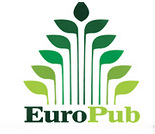THE IMPACT OF ENVIRONMENTAL POLLUTION IN THE THOUSAND ISLANDS
Abstract
The Thousand Islands, a key marine tourism destination in Indonesia, faces serious threats from environmental pollution. Plastic waste, oil spills, and unsustainable tourism activities damage the marine ecosystem, human health, and the socio-economic well-being of the local community. This study aims to examine the sources of pollution, its impacts, and mitigation efforts implemented in the Thousand Islands. The research method utilized a literature 1the primary pollution comes from microplastics, oil spills, and illegal tourism and fishing activities. This environmental damage reduces marine productivity, poses health risks, and fuels social inequality. Mitigation efforts need to be strengthened through plastic reduction policies, conservation education, and integrated waste management.
Full Text:
PDFReferences
Antaranews.com. (2025). The Threat of Microplastics in the Seribu Islands. Retrieved fromhttps://www.antaranews.com
Hukumonline.com. (2021). Pollution in the Seribu Islands: A Recurring Incident. Retrieved fromhttps://www.hukumonline.com
Kompasiana. (2024). Environmental Ecosystem Damage in the Seribu Islands. Accessed from https://www.kompasiana.com
Sajogyo Institute. (2017). Study of Agrarian and Environmental Inequality in the Seribu Islands. Jakarta: Sajogyo Institute.
National Research and Innovation Agency (BRIN). (2023). Annual Report on Coastal Water Quality of DKI Jakarta. Jakarta: BRIN Press.
Jakarta Provincial Environmental Agency. (2023). Report on Waste Management in the Seribu Islands. Jakarta: DKI Jakarta Environmental Agency.
LIPI. (2022). Study of Microplastics and Marine Biodiversity in the Seribu Islands. Indonesian Institute of Sciences.
WWF Indonesia. (2021). Portrait of Indonesian Marine Pollution and Coastal Conservation Efforts. Jakarta: WWF Indonesia.
Nugroho, RA & Putri, DS (2020). The Impact of Tourism Activities on Marine Ecosystems in Archipelagic Regions. Journal of Marine and Coastal Affairs, 12(2), 117-126.
Law Number 32 of 2009 concerning Environmental Protection and Management. (2009). Republic of Indonesia.
Rahardjo, MI, & Lestari, S. (2019). Evaluation of Seawater Quality Based on Human Activities in the Coastal Area of North Jakarta. Journal of Environmental Sciences, 17(1), 33–40.
Siregar, VP, et al. (2020). Monitoring Marine Pollution in the Coastal Area of Jakarta Bay Using a Remote Sensing Approach. Journal of Oceanography, 9(3), 150–158.
BPS Seribu Islands. (2022). Seribu Islands in Figures 2022. Jakarta: Central Statistics Agency.
Ministry of Maritime Affairs and Fisheries of the Republic of Indonesia. (2021). Guidelines for the Management of Indonesian Marine Conservation Areas. Jakarta: Directorate General of Marine Spatial Management.
Pramudito, A., & Nursidik, A. (2021). The Impact of Pollution on Marine Biodiversity on Pari Island, Seribu Islands. Journal of Marine Conservation, 6(1), 45–55.
DOI: https://doi.org/10.46576/ijsseh.v6i3.7424
Article Metrics
Abstract view : 45 timesPDF – 11 times
Refbacks
- There are currently no refbacks.
Copyright (c) 2025 Kerlima Hutagaol, Anugrah Ramadha Pratama, Fazry Alwy Sirodz, Purnama Ramdan, Angga Febriadi, Tiodorus Situmorang

This work is licensed under a Creative Commons Attribution-NonCommercial-ShareAlike 4.0 International License.
Dharmawangsa International Journal Indexed by:
Member Of :
Dharmawangsa: International Journal of the Social Sciences, Education and Humanitis Published By:
UNIVERSITAS DHARMAWANGSA
Alamat : Jl. K. L. Yos Sudarso No. 224 Medan
Kontak : Tel. 061 6635682 - 6613783 Fax. 061 6615190
Email : dharmawangsajournal@dharmawangsa.ac.id
Dharmawangsa:International Journal of the Social Sciences, Education and Humanitis by Universitas Dharmawangsa Medan is licensed under a Creative Commons Attribution-NonCommercial-ShareAlike 4.0 International License.
Based on a work at: https://jurnal.dharmawangsa.ac.id/index.php/dharmawangsa/index

11.jpg)
















